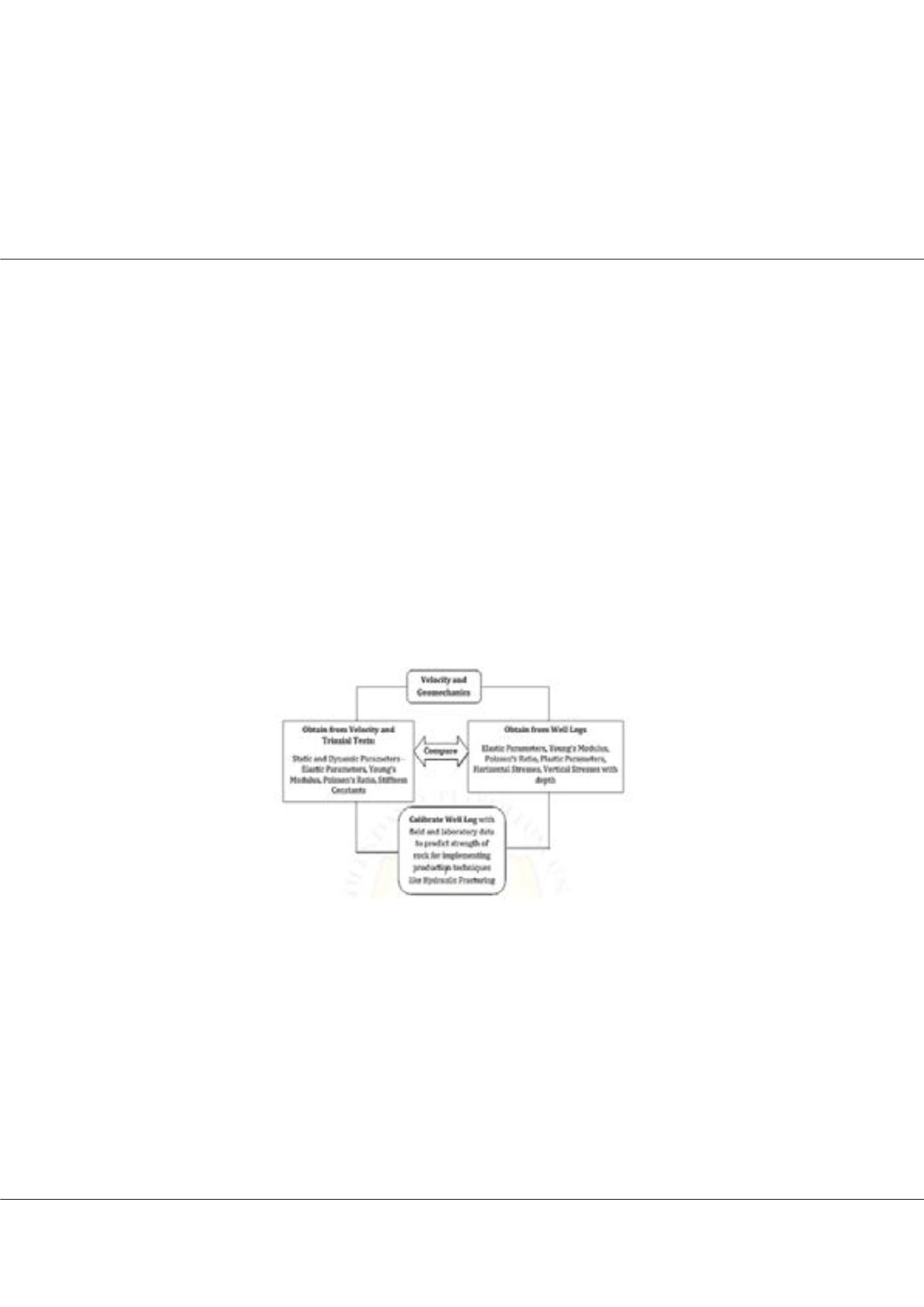

Page 34
Notes:
conferenceseries
.com
Volume 8, Issue 4 (Suppl)
J Pet Environ Biotechnol, an open access journal
ISSN: 2157-7463
Oil Gas Expo 2017
July 13-14, 2017
Oil and Gas
July 13-14, 2017 Berlin, Germany
3
rd
International Conference and Expo on
Velocity anisotropy and geomechanical characterization of cambay shale, cambay basin, Gujarat, India
Vaishali Sharma, Anirbid Sircar
and
Dhruvin Kaneria
Pandit Deendayal Petroleum University, India
T
he Cambay Basin is an intracratonic basin located along the western continental passive margin of Indian platform of Western
Indian State of Gujarat. It has been prognosticated as the main shale gas reservoirs with resource potential of around 231 BCF/
mi
2
, high organic matter content (3.0%), complex lithology-stratigraphy and anisotropy. It is very difficult to understand the mineral
assemblage, zone of weakness, fracture alignment and stress orientation in this unconventional reserve. The tectonic block chosen
for investigation is Ahmedabad-Mehsana Tectonic Block (North Cambay Basin) of Cambay Basin, India. In the study, a directional
dependence of the velocity of seismic waves (P and S waves) in the horizontal and vertical core plugs of Cambay Shale has been studied
at different confining pressure (i.e., from 250 psi to 3000 psi) to understand the preferential orientation of mineral, microcracks,
fracture alignment across the bedding plane and porosity. The elastic stiffness constants andThomsen's parameters are calculated and
plotted against the different confining pressure on both the plugs. The variation of velocities indicates the anisotropic nature of this
shale and the same has been validated by the results of Single Stage Triaxial Geomechanical Test. In the second part of the study, rock
mechanical properties like Young's modulus, Bulk Modulus and Poisson's ratio (both static and dynamic) has been determined and
compared with the existing well logs of the block. The idea is to correlate and validate the log derived rock parameters with the core
data from laboratory which will help in transforming and presenting the complex anisotropic nature of this shale in a simple way.
This study can be utilized to provide the useful information on shale stimulation practices like hydraulic fracturing, micro seismic
monitoring etc. All the results are coded in a Java Script and a simulator has been designed for correlation and validation of all the
computed data.
Figure-1:
Well log and laboratory data comparison
Biography
Dhruvin Kaneria is an Oil and Gas Innovator, is pursuing his graduation in Petroleum Engineering from Pandit Deendayal Petroleum University. He has presented
more than 5 papers at various universities in India. His ongoing research includes Cambay Shale geomechanics, proppant conductivity and on new ideas like
Internet of things and laser technology which could possibly change oil and operations.
dhruvin.kaneria.india@gmail.comVaishali Sharma et al., J Pet Environ Biotechnol 2017, 8:4 (Suppl)
DOI: 10.4172/2157-7463-C1-034
















